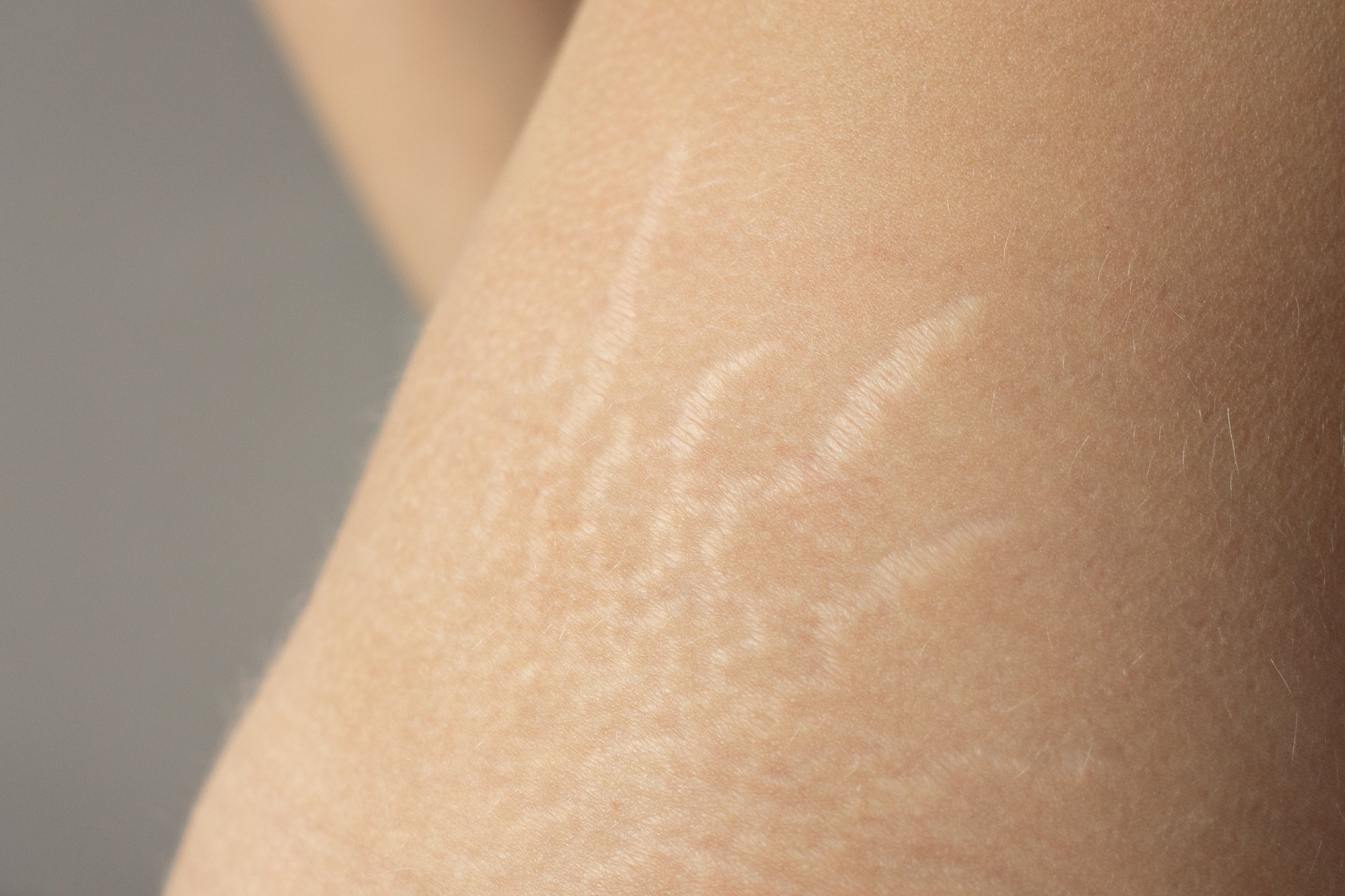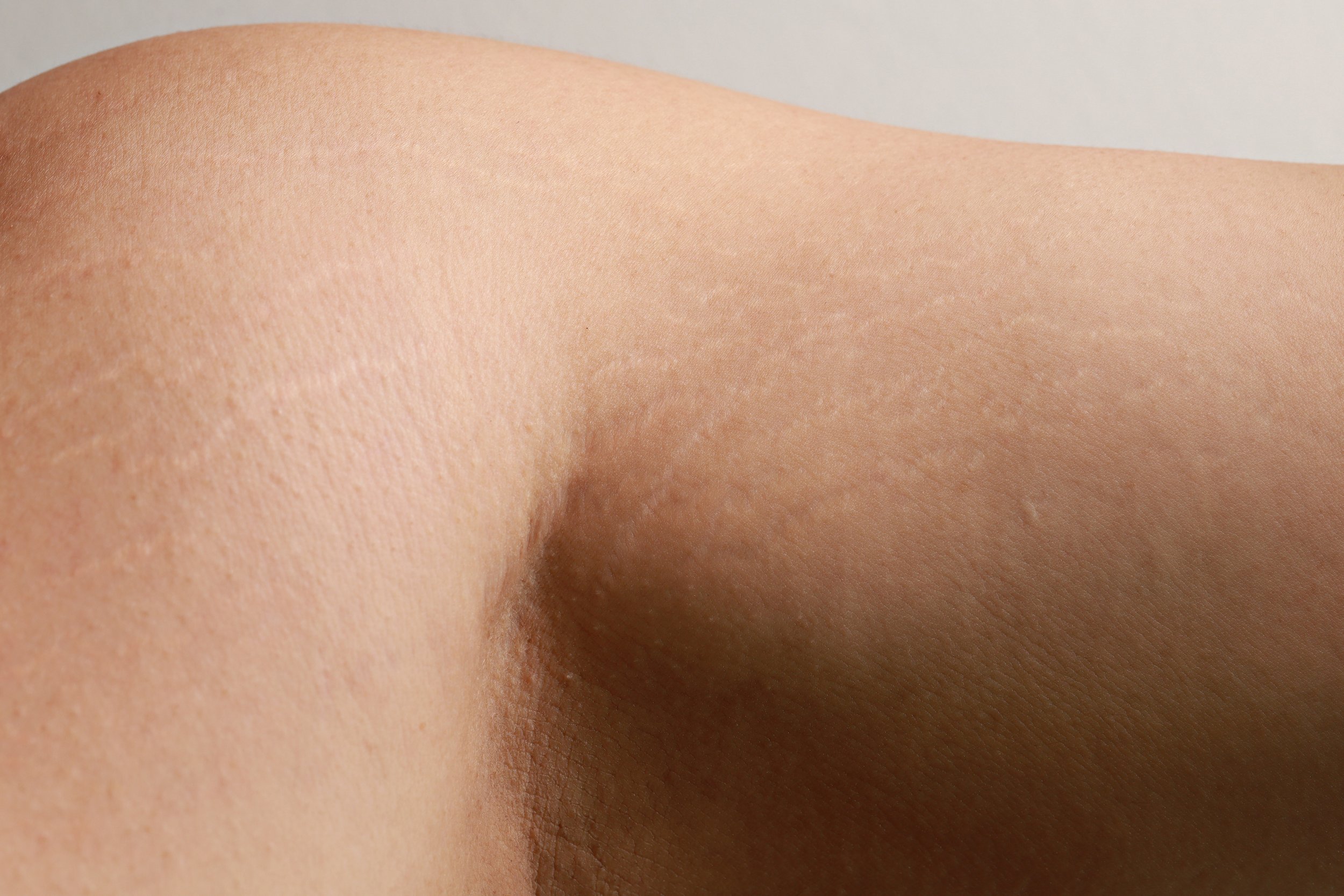
Stretch Marks

What are stretch marks?
Stretch marks, also known as striae, are long, narrow streaks, stripes, or lines that develop on the skin. They can appear on various parts of the body, commonly found on the abdomen, thighs, hips, buttocks, and breasts. Stretch marks occur when the skin is stretched rapidly due to factors like pregnancy, rapid weight gain or loss, puberty, or certain medical conditions. Initially, they may appear pink, red, purple, or dark brown, but over time they often fade to a lighter color.
While stretch marks are harmless and don't cause any medical problems, some individuals may seek treatments to reduce their appearance for cosmetic reasons.
Symptoms of stretch marks
Stretch marks can vary in size but are typically characterized by the following:
Indented streaks or lines on the skin that have a different color than your skin tone, typically white, purple, light pink, or red.
Itchiness and soreness
Glossy skin
Skin that feels thin and flattened with a different texture than the surrounding skin
How common are stretch marks?
Stretch marks are very common, especially in pregnancy. In many cases, the appearance of stretch marks fade over time. In fact, between 50-90% of pregnant women will develop them ¹
What causes stretch marks?
Stretch marks are primarily caused by the stretching of the skin and an increase in cortisone, a hormone produced by the adrenal glands. When the skin undergoes rapid expansion or contraction, the collagen and elastin fibers which support the skin can tear, leading to the formation of stretch marks.

Risk factors for developing stretch marks
Stretch marks can develop on anyone, regardless of age, gender, or skin type. They commonly develop if:
You’re a woman
You experience growth during puberty
You’re pregnant
You gain muscle growth through weightlifting
You rapidly gain weight
You have a family history of stretch marks
Additionally, conditions such as Cushing's syndrome and prolonged use of corticosteroid medications can increase the likelihood of developing stretch marks.
How to prevent stretch marks
While it may not be possible to completely prevent stretch marks (because of genetics), there are several strategies that can help minimize their development:
Stay hydrated.
To prevent stretch marks, it’s essential to drink plenty of water because water helps keep the skin soft.
Maintain a healthy weight.
Rapid weight gain can contribute to the development of stretch marks.
Eat a nutritious diet rich in vitamins and minerals.
Foods rich in zinc and vitamins A, C, and D help support skin health and elasticity.
Engage in regular exercise.
Exercise helps produce collagen, which keeps the skin firm and toned.
How are stretch marks treated?
Microneedling
Microneedling is a cosmetic procedure that has been used in the treatment of stretch marks. This minimally invasive technique involves the use of a device with fine needles that create small punctures in the skin. These micro-injuries stimulate the skin's natural healing process, leading to increased collagen and elastin production. Over time, this can help improve the appearance of stretch marks by making them less noticeable. Multiple sessions of microneedling may be needed to achieve desired results, and downtime is usually minimal following the procedure. It is essential to consult with a qualified healthcare provider to determine if microneedling is a suitable option for treating stretch marks.
1. Osman H, Rubeiz N, Tamim H, Nassar AH. Risk factors for the development of striae gravidarum. Am J Obstet Gynecol. 2007 Jan;196(1):62.e1-5. doi: 10.1016/j.ajog.2006.08.044. PMID: 17240237; PMCID: PMC1913631.




